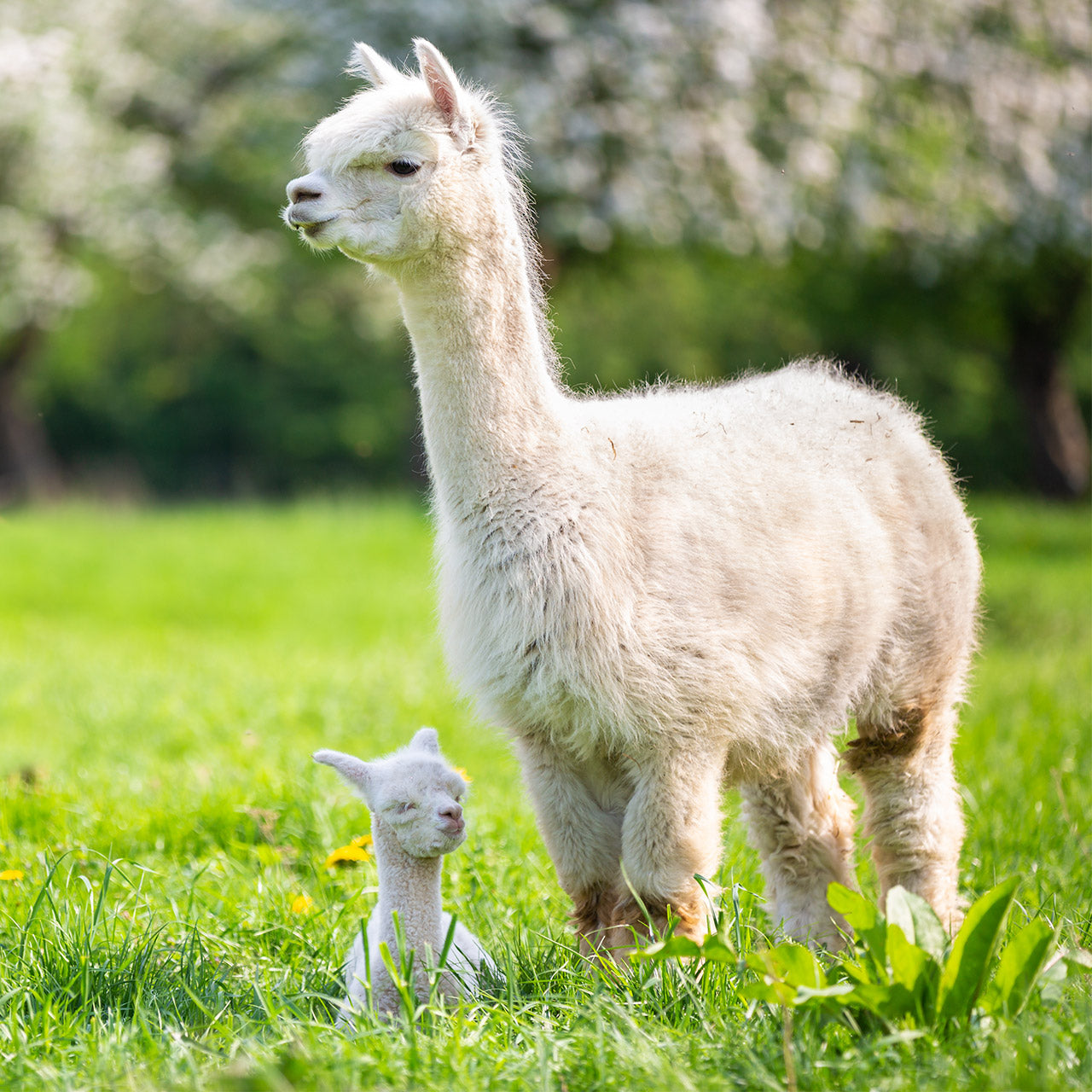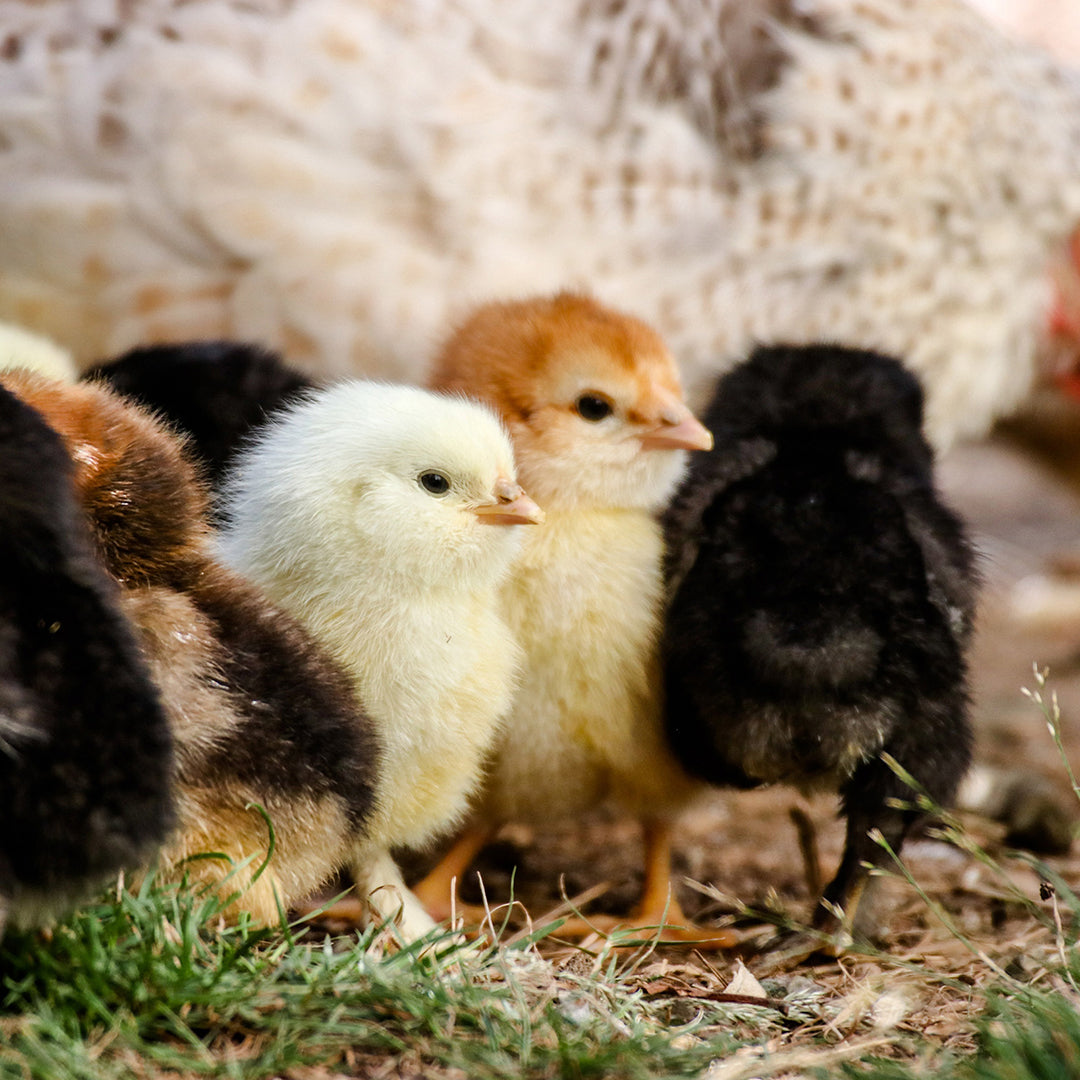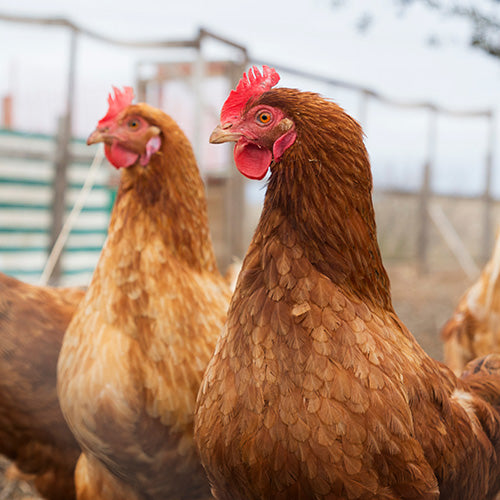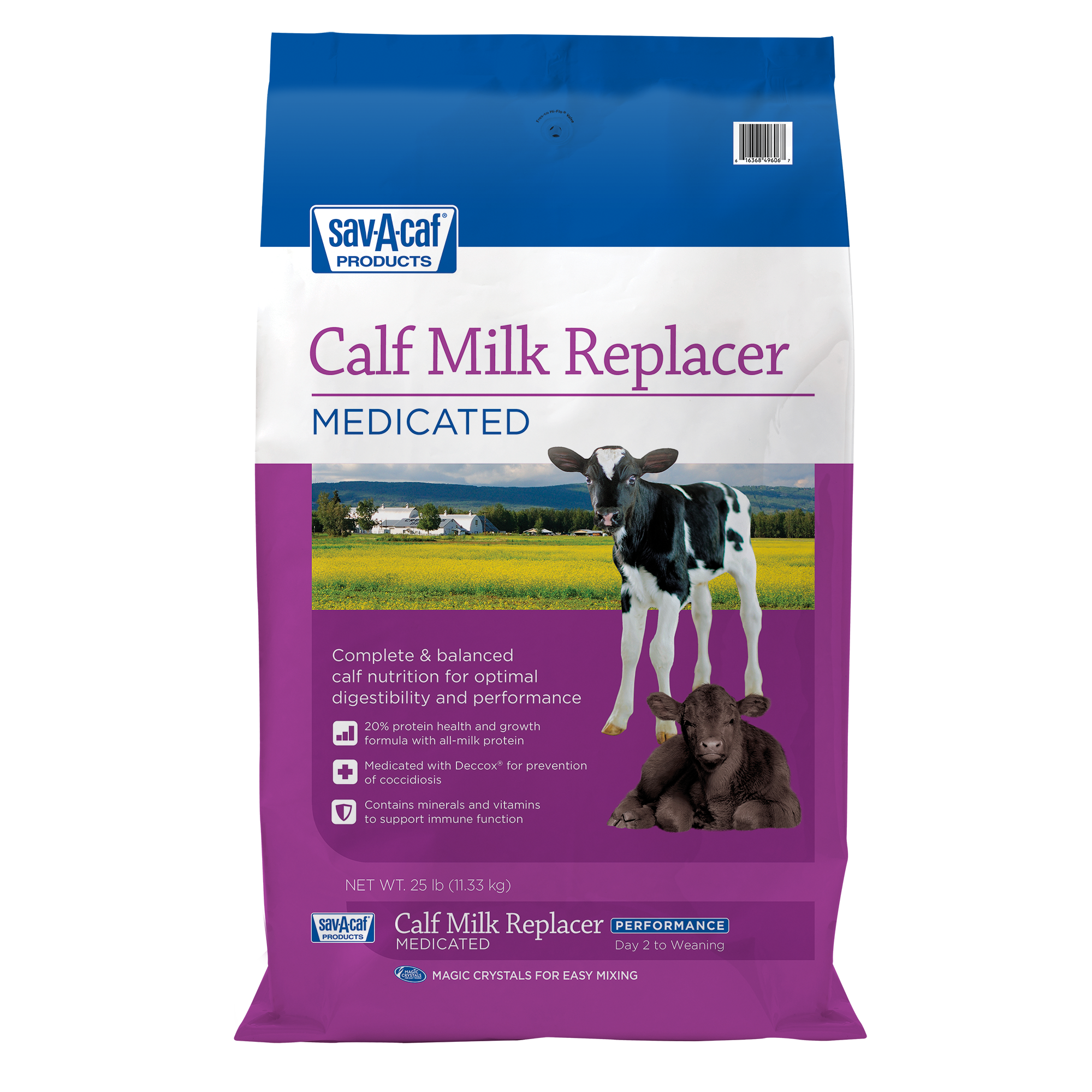
How to prepare for the birth of a cria
Do you have a cria on the way? How exciting! Whether it’s a pregnant llama or alpaca who’s expecting, let’s walk through some of the most important things you should know as you prepare.
Prepping for your baby
A llama’s average gestation period is close to a full year, about 345-350 days. One cria is most common, and twins are extremely rare. A newborn llama usually weighs between 20-30 pounds at birth, while newborn alpacas weigh almost half that at about 15-20 pounds.
Once your llama or alpaca’s gestation period approaches its end, make sure they have a safe spot to deliver. If the weather is good, they can give birth in a grassy pasture. Just make sure it’s free of harmful objects that may hurt them or the cria, such as barbed wire or ponds. If the weather is less ideal, however, a large, clean and well-ventilated stall with clean bedding will provide a safe environment for your dam.
Signs of labor
At about 330 days of gestation, start checking for signs that labor could be approaching to make sure you’re prepared for your newborn cria. You may want to check on the mother every few hours or use a baby monitor for a more constant monitoring system. The signs that your dam will begin labor may be subtle but there are some common things to look for, including:
- Fuller udder: The milk will begin coming in two to three weeks before delivery, and the teats will become waxy three to four days before the cria is born.
- Lengthening of the vulva: The dam’s vulva will swell and become more prominent a few days before labor begins.
- Restlessness: When labor is approaching, it can be hard for the dam to get comfortable. She may hum, shift or roll from side to side, or rise and lie down repeatedly. She may also stop eating and chewing her cud.
- Any unusual behavior: Any behavior that is out of the ordinary for your llama may be a sign that she will give birth soon.
The birthing kit
When it comes time for your newborn cria to enter the world, prepare a well-stocked birthing kit to assist with any and all steps of the labor process. A birthing kit should include the following items:
- Flashlight: To better see all angles of your laboring dam and new cria.
- Several clean, old towels: To cover the bedding during birth, dry off the new cria and clean up birthing fluids.
- Sharp scissors and dental floss: For cutting anything off the umbilical cord if needed.
- 7% iodine tincture and an empty prescription bottle: For dipping the cria’s umbilical cord. A pill bottle is a good size and shape for holding the iodine during dipping.
- Betadine surgical scrub: To sanitize supplies or your hands.
- Sterile lubrication: In case your veterinarian advises you to assist with the birth.
- Garbage bags: For collecting afterbirth and soiled towels.
- Rectal thermometer: To check the newborn cria’s temperature if they seem weak or lethargic.
- Bottle and nipple: In case the cria is not able to nurse immediately after birth.
- Colostrum supplement: To ensure the cria gets enough for those critical first feedings.
- Electrolytes: To help reverse the effects of loss of body fluids due to diarrhea in newborn cria and help rehydrate the dam after laboring.
The delivery process
Most llamas or alpacas will deliver their cria in the daylight, between sunrise and mid-day. The first stage of labor lasts about two hours. During this stage, the dam will seem quite restless and will strain a bit when she has a contraction. If she shows signs of serious distress, such as biting or chewing at her stomach or rolling completely over, call your trusted veterinarian for assistance.
The second stage of labor occurs when the placenta or cria is first visible. This stage moves very quickly. Once this stage begins, the cria will likely be born in a mere 30 minutes. A normal birth position includes the cria’s nose and front toes appearing first.
If you do not see both hooves, if the cria is in breech position i.e., rump first, or if the birth does not progress within 45 minutes after the second stage of labor begins, consult your veterinarian or an experienced llama owner for advice on how to assist your dam. Likewise, if the dam does not pass her placenta within six hours of birth, there could be complications that your veterinarian can help you address.
It’s a cria!
Once you have welcomed your newborn cria into the world, dry them with towels to help maintain its body temperature, and dip their navel in iodine to prevent pathogens from entering the umbilical cord. Besides this, it is important to let the cria bond with his mother and nurse. They will likely be able to stand for the first time within an hour. If they seem weak and lethargic, however, check their temperature with the rectal thermometer. If their temperature is less than 100-102 degrees Fahrenheit, rub them with a towel or warm them with an electric hair dryer.
Make sure to build a strong relationship with your veterinarian or an experienced llama or alpaca owner ahead of time who could assist you if any complications were to arise.
Get more care and nutrition tips for your crias and follow My Farm Journey on Facebook and Instagram for additional insights.
Find Solutions for Your Animals
-

January 11, 2022
Whether housed in a coop or free ranging on your farm, your birds are exposed to multiple threats every day that could cause illness or impact their well-being. Now there’s a way to be more proactive with regular support for...
-

April 6, 2022
You’ve raised your chicks to adulthood and now they’re fully feathered hens. Way to go! Now, you get to enjoy their eggs and companionship for years to come. To maximize their life, support their production potential and kee...





